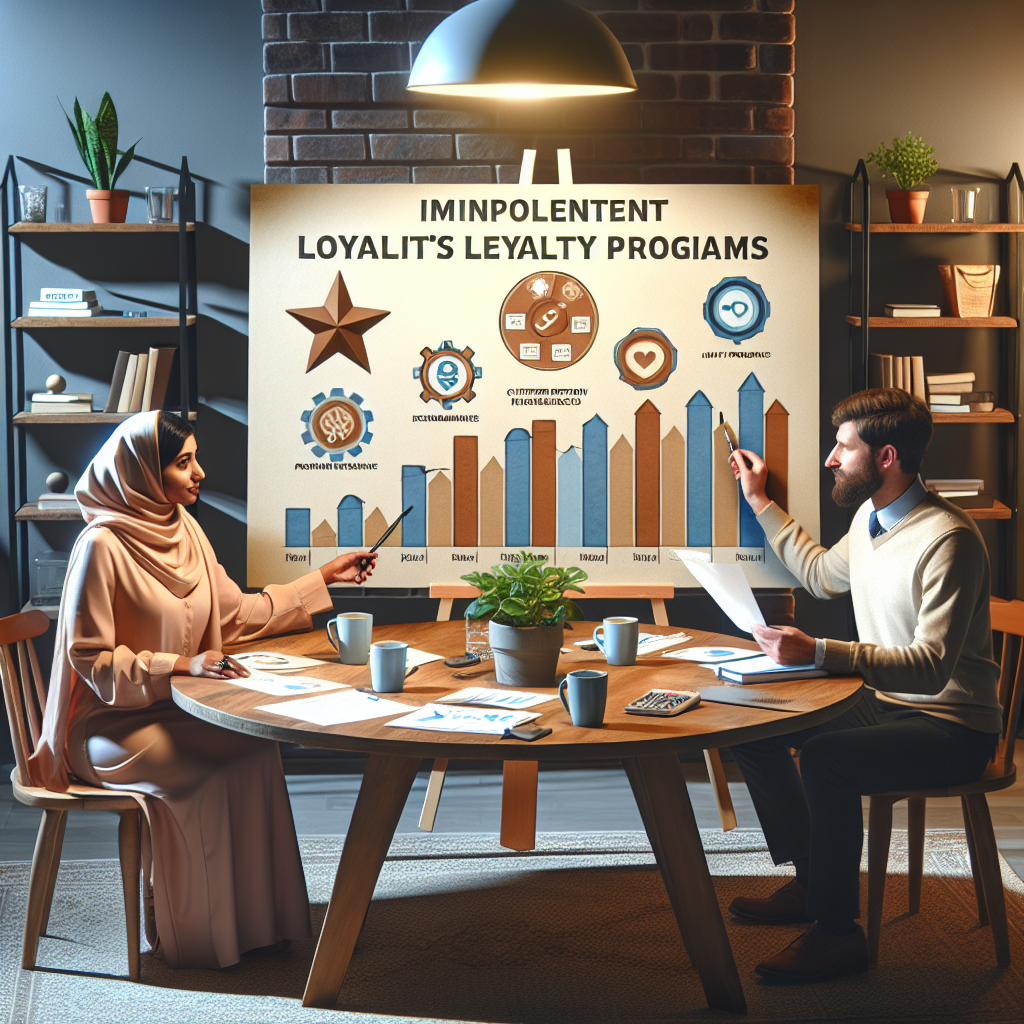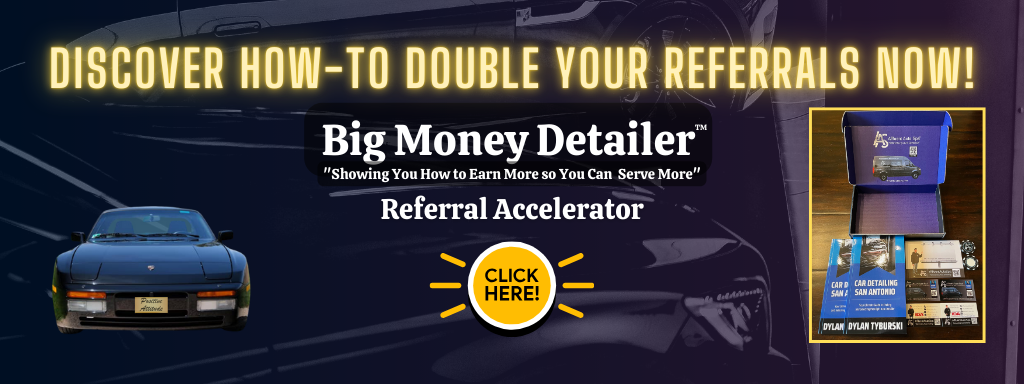Hey there! As a marketer who has spent years tinkering with various loyalty programs, I’m excited to share what I’ve learned about crafting effective strategies that not only attract customers but also keep them coming back for more. So, let’s dive in and explore the core elements that can transform occasional buyers into loyal patrons.
Understanding Your Customer’s Needs
Collecting Valuable Data
First off, it’s all about your customers. I’ve found that understanding their needs and preferences is crucial for any loyalty program to really work. You’ll want to start by collecting data—think purchase history, browsing habits, and even demographic details. This info helps you see what drives your customers’ decisions, allowing you to tailor your approach accordingly.
Use surveys, feedback forms, or even loyalty card sign-ups to gather relevant insights. Don’t shy away from using real interactions; sometimes, just chatting with a customer can provide gold nuggets of information. I once learned that offering more gluten-free options could drastically increase my store’s repeat visits, just by having a casual conversation!
Just remember, collecting data is just the beginning. The real challenge is analyzing it to find actionable insights that will inform your loyalty program design. Always be on the lookout for trends or patterns that can help further define your customers’ needs.
Segmenting Your Audience
Now that you’ve got data, let’s make sense of it by segmenting your audience. This means breaking down your customer base into groups based on shared characteristics or behaviors. Personally, when I did this, I could target each segment more effectively with tailored offers. It felt like I was speaking directly to each group!
For example, if you notice a group of frequent buyers versus occasional ones, why not create distinct loyalty incentives for each? Frequent buyers might appreciate exclusive discounts, while those who visit less often might respond better to welcome-back offers. This targeted approach helps boost engagement and increase retention rates.
Trust me when I say that personalization is the name of the game. The more tailored your initiatives are, the more likely your customers will feel valued and understood—contributing to a robust loyalty program.
Listening and Adapting
As you roll out your loyalty program, staying flexible is vital. Customer needs aren’t static; they change over time—sometimes unexpectedly! I remember one campaign where my initial offerings were spot-on, but then trends shifted. Keeping an ear to the ground and being willing to tweak your program is essential. You can do this by consistently gathering customer feedback, tracking engagement metrics, and conducting regular assessments of your offerings.
This adaptability doesn’t just improve your loyalty program; it signals to your customers that you care about their experiences and are committed to evolving alongside them. It’s that commitment to listening and adapting that can turn an alright loyalty program into an exceptional one.
Embrace the change and continue to innovate based on customer needs, ensuring that your loyalty program feels fresh and relevant. It’ll pay off, I promise!
Designing Attractive Rewards
Choosing the Right Incentives
Okay, we’ve covered understanding your customers; now it’s time to get into the fun part—designing attractive rewards! From my experience, the key is to offer rewards that resonate and excite customers. Cash-back rewards, discounts, exclusive products, or even experiences work wonders. You have to think about what your specific audience values most.
For example, if you’re running a coffee shop, a free drink after every ten purchases can be a simple yet effective incentive. Offering a VIP experience for your most loyal customers, like an exclusive tasting event, can also create buzz. I’ve seen smaller-scale businesses thrive by providing unique offerings that larger companies overlook!
Make sure to showcase these rewards clearly within your loyalty program so that your customers know what they’re working towards. Visual cues, like progress bars, can create excitement as they see how close they are to receiving their rewards.
Creating a Tiered System
A tiered loyalty program can really add a layer of excitement and competition among your customers. By establishing levels, customers will strive to reach a higher tier for better rewards, and they’ll feel a sense of accomplishment upon achieving that goal. In my case, this not only increased sales but also fostered a sense of community as customers compared their tier levels!
For instance, you could set up three tiers: Bronze, Silver, and Gold, with each tier offering greater rewards. As they move up, you might include perks like early access to new products or special discounts. This encourages lingering loyalty as customers race to earn that next tier.
But remember, you have to make each tier attainable. If customers feel that the top tier is out of reach, it can lead to frustration rather than motivation. Clear communication of how to achieve these rewards is crucial!
Leveraging Gamification
Gamification is another fantastic approach to spice up your loyalty program! I’ve had loads of success by incorporating game-like elements with challenges, points earning, and rewards systems. This not only keeps customers engaged but adds a little fun to their shopping experience.
Think about it: who doesn’t like to play games? You can create challenges that encourage customers to try new products or spread the word on social media to earn extra points. Not only does this keep customers involved, but it also promotes organic reach for your brand through their networks!
Overall, gamification can transform a standard loyalty program into a thrilling adventure that customers can’t wait to participate in, resulting in higher engagement and more sales for you.
Effective Communication
Creating Awareness and Excitement
Next up is communication. Your customers need to know all about your loyalty program! From my experience, you’ll want to get the word out through multiple channels—email newsletters, social media, in-store signage, and even via word of mouth. Make it a buzz-worthy announcement!
An enticing launch campaign can create excitement. Think about a countdown leading up to the launch or a special treat for the first few sign-ups. I once held a special event where customers who joined the program received exclusive merchandise, which created a frenzy and boosted initial engagement.
Updating your customers about ongoing promotions and rewards is also crucial. Consistent communication keeps your program on top of their minds and encourages continued participation.
Using Multiple Channels
Today’s marketing world is all about reaching your customers where they already are—be it through email, social media, or even SMS. I cannot stress enough how effective it is to use multiple channels to communicate about your loyalty program. Each customer interacts differently, so meet them where they feel most comfortable!
For instance, I use an email campaign for more detailed updates while leveraging Instagram for visual storytelling. Posting engaging content that showcases the fun rewards and highlights from your loyalty program can intrigue potential customers while engaging current ones.
Don’t forget to make the enrollment process seamless, regardless of the channel. This simplicity encourages sign-ups at every touchpoint, making it easier for customers to join in the fun of your program!
Engaging Through Feedback
Lastly, feedback loops can work wonders in maintaining communication. I always encourage my customers to share their experiences with the loyalty program. This feedback provides great insights into what’s working and what isn’t. Plus, it fosters a sense of community, as customers feel their opinions are valued.
Use surveys, social media polls, or simply ask during transactions! I’ve learned that this openness helps foster trust and loyalty. When customers see their feedback leading to program changes, they become more engaged and invested in the success of the program.
So, listen actively and adapt your program based on what you hear. This leads to a stronger connection and builds long-term relationships with your customer base. Overall, by prioritizing effective communication, you ensure your loyalty program reflects your customers’ needs and desires.
Monitoring and Adjusting Your Program
Tracking Performance Metrics
The last crucial point I’d like to touch on is monitoring your program. After implementing your loyalty program, it’s essential to regularly analyze its performance metrics. I always start by looking at key indicators like customer retention rates, engagement levels, and overall sales growth linked to the program. These metrics will help measure how well your program is performing.
Additionally, tracking participation rates is key. You want to understand how many customers are signing up and, more importantly, how many are actively engaging with the program. If you notice a drop-off, it might be time to reassess the rewards or communication strategies you have in place.
By keeping a close eye on these metrics, you’ll be able to identify areas that may require refinement, ensuring your program remains fresh and exciting for your customers.
Adapting to Market Trends
As I mentioned earlier, change is constant, especially in the market. Keeping your ear to the ground for trends and shifts in consumer behavior can guide necessary adjustments to your loyalty program. I’ve adapted my strategies based on these insights numerous times to keep my brand relevant.
Don’t be afraid to evolve! For instance, if there’s a growing trend towards sustainability, consider integrating eco-friendly rewards or highlighting green practices in your program. This not only showcases your brand’s adaptability but also aligns with customer values, enhancing loyalty.
Stay connected with industry news and competitive offerings; this insight will help position your program favorably in your market—keeping you competitive for years to come!
Soliciting Ongoing Customer Input
Once everything’s in motion, never stop seeking feedback. Your customers are your best critics, and their insights will shine a light on areas for improvement that you might not see on your own. Have quarterly reviews with your team to assess feedback and see if any patterns emerge—this can indicate what modifications might be necessary.
Think of it as a continuous loop where you’re gathering insights, adjusting rewards, and enhancing the customer experience based on what they tell you. I’ve found that this cycle helps maintain a lively quality to the loyalty program—customers will often share their excitement about changes when they feel like they had a hand in them!
Every little bit of feedback counts! So lean into this process and let your customers guide your improvements.
FAQ
1. What are some common types of loyalty programs?
Common types include point-based systems, tiered rewards, cash-back offers, and exclusive members-only experiences. Each type can cater to different business models and customer preferences.
2. How can I effectively promote my loyalty program?
Use various marketing channels, including social media, email newsletters, and in-store signage. Engaging launch campaigns can also generate excitement and awareness. Don’t forget to showcase tangible rewards!
3. How often should I evaluate my loyalty program’s success?
It’s recommended to review performance metrics regularly—at least quarterly. This frequency allows you to stay adaptable and make necessary adjustments based on customer feedback and changing market trends.
4. Are loyalty programs effective for all types of businesses?
While loyalty programs can work across various industries, their design needs to cater to specific customer needs and behaviors. Tailoring your program to fit your audience is key to its effectiveness.
5. What’s the primary goal of a loyalty program?
The main aim is to foster customer loyalty by encouraging repeat business. A successful loyalty program not only retains existing customers but can also attract new ones through positive word-of-mouth and enhanced experiences.



